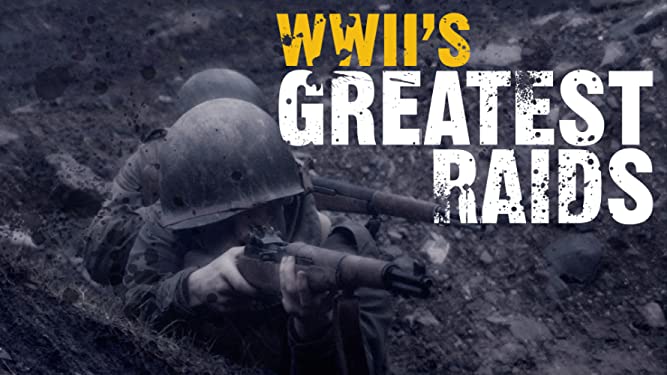Great Raids of World War II episode 6 – Arctic Commando Assaults: As Britain faced Nazi Germany alone in July 1940, Winston Churchill’s response was to set up the Commandos – an elite fighting force to raid enemy coasts. In December 1941 on his orders a major assault on Vaagso in northern Norway, convinced Hitler that the country was a vital strategic target. Subsequently more than 250,000 Nazi troops were pinned down there uselessly for the rest of the war.
Operation Archery was a World War II commando raid carried out by the British No. 3 and No. 4 Commandos on the German-occupied island of Vågsøy in Norway. The operation was conducted in December 1941 and was intended to disrupt German shipping and military operations in the area. The raid was carried out by a force of around 500 commandos, who were transported to the island by naval vessels and landed on the coast in the early hours of 27 December 1941. The commandos quickly overwhelmed the small German garrison on the island and began attacking shipping and military targets.
The raid was successful in achieving its objectives, with several ships and installations destroyed or damaged. However, the commandos also suffered heavy casualties, with nearly a third of the force being killed or captured. Despite the high cost, the raid was seen as a significant propaganda victory for the Allies and demonstrated the effectiveness of commando operations.
World War II was the greatest military confrontation the world has ever known. On land and sea and in the air the scale of the conflict was unprecedented. But amid the great campaigns were many smaller-scale operations which were vital to Allied success – occasions when small numbers of men could have an effect out of all proportion to their numbers; occasions when the course of the war hinged on their courage and daring.
This series looks at six such raids. With the use of veterans’ accounts; carefully researched archive film; meticulous reconstructions and 3-D graphics the viewer is put right into the heart of the action – whether it was foiling Hitler’s attempts to acquire an atomic bomb, or discovering the secrets of the air defences of the Nazi Reich. The recreated raids include the British and Norwegian mission to smash Hitler’s nuclear programme; the canoe-borne commando assault on Bordeaux to disrupt supplies of raw materials essential for Hitler’s war machine; and the paratroop capture of a key German radar installation at Bruneval, which brought back information vital to enable Britain’s bombers to strike at the heart of Nazi Germany. All six episodes from the series are included on this set.
Great Raids of World War II episode 6 – Arctic Commando Assaults
Operation Archery
Operation Archery, also known as the Måløy Raid, was a British Combined Operations raid during World War II against German positions on the island of Vågsøy, Norway, on 27 December 1941. British Commandos of No. 3 Commando, two troops of No. 2 Commando, a medical detachment of No. 4 Commando, a demolition party from 101 Troop (canoe) of No. 6 Commando, and a dozen Norwegians from Norwegian Independent Company 1 conducted the raid. The Royal Navy, led by the light cruiser HMS Kenya, with the destroyers HMS Onslow, Oribi, Offa and Chiddingfold, provided fire support. The submarine HMS Tuna was in support as the force navigational check. Prince Charles and Prince Leopold transported the troops. Also in support were Royal Air Force bombers and fighter-bombers.
The dawn landing was preceded by a very effective naval bombardment and objectives were achieved, except in Måløy. German opposition in the town was much stiffer than expected as, unknown to the British, a Gebirgsjäger (mountain troops) unit of experienced troops from the Eastern Front was there on leave. The defenders’ experience in sniping and street fighting caused the operation to develop into a bitter house-to-house battle. The British commander, John Durnford-Slater, called on the floating reserve and troops from Vågsøy Island. Several local citizens assisted the commandos by acting as porters for ammunition, grenades and other explosives and in carrying away the wounded.
At around 14:00, the commandos started their withdrawal having destroyed four factories, the fish-oil stores, ammunition and fuel stores, the telephone exchange and various military installations, leaving much of the town in flames. The naval assault force of one cruiser and four destroyers had sunk 10 vessels, some found in the act of being scuttled to prevent capture. Technical difficulties had prevented the German coastal artillery from being fully effective, with one of their three 130 mm guns scoring one hit on the cruiser.




